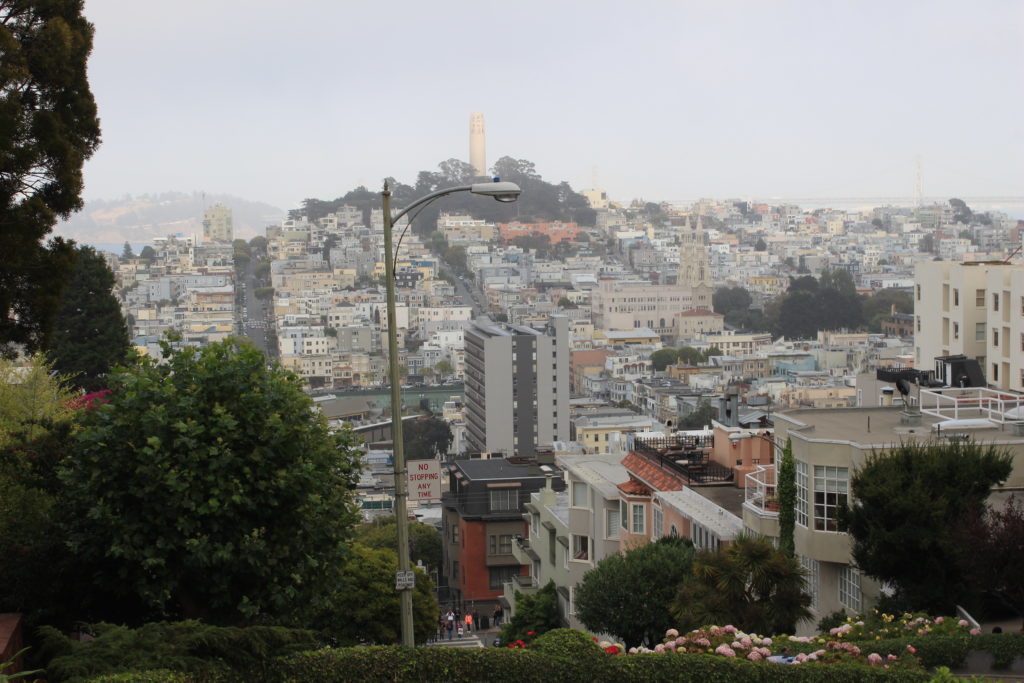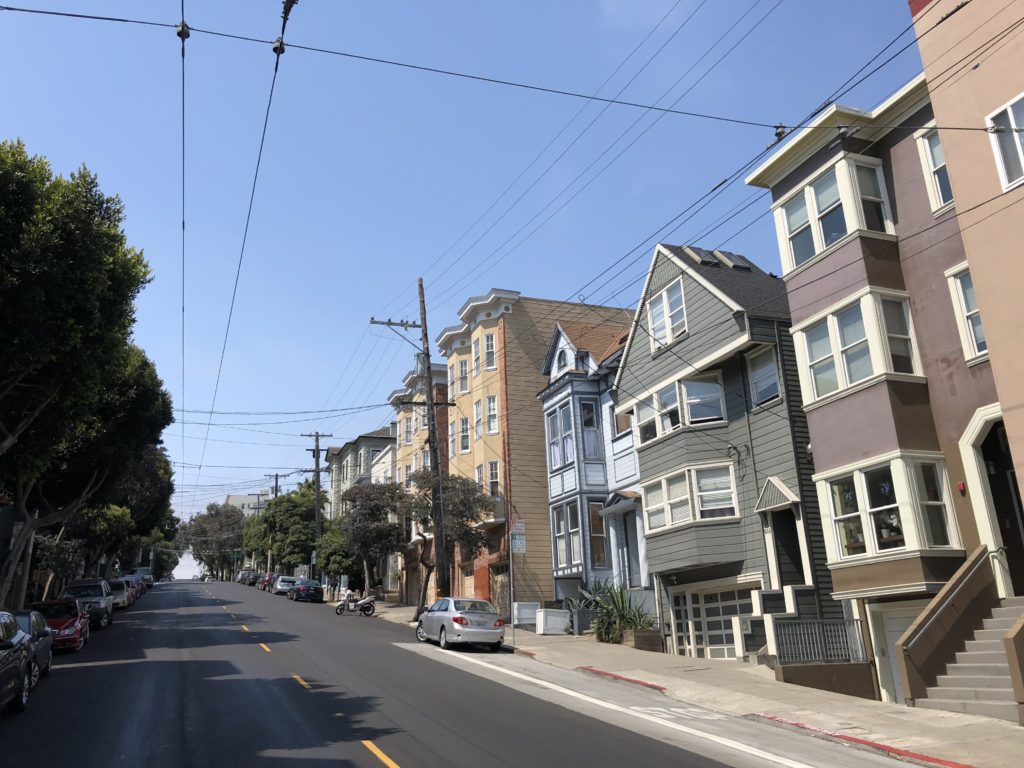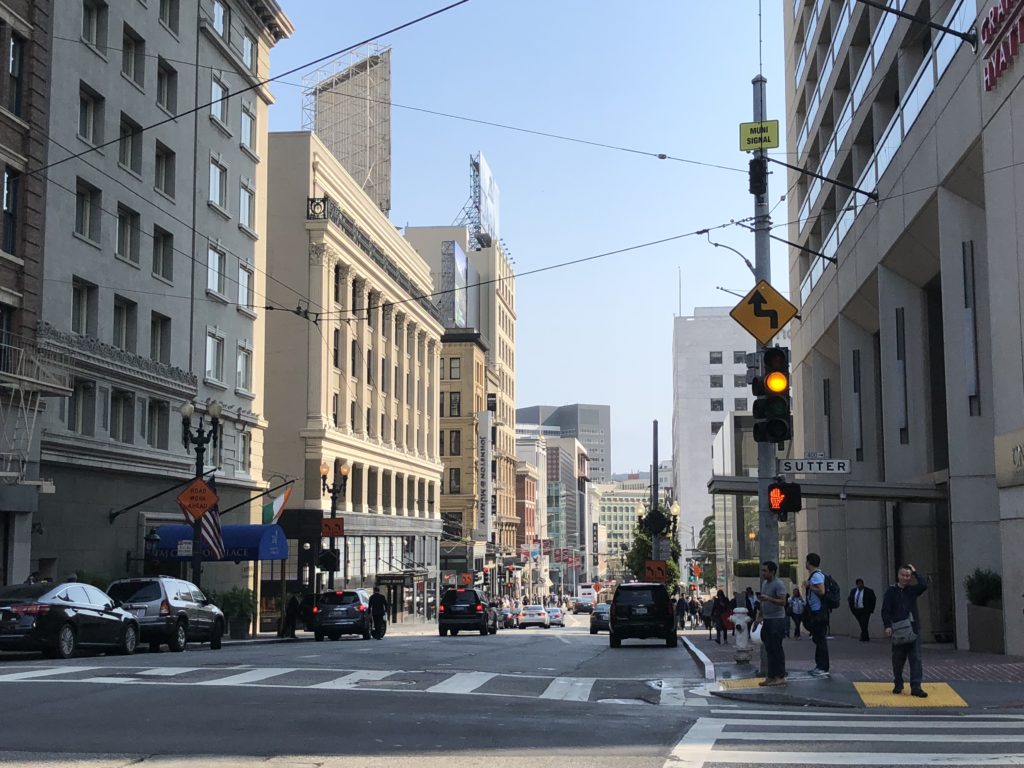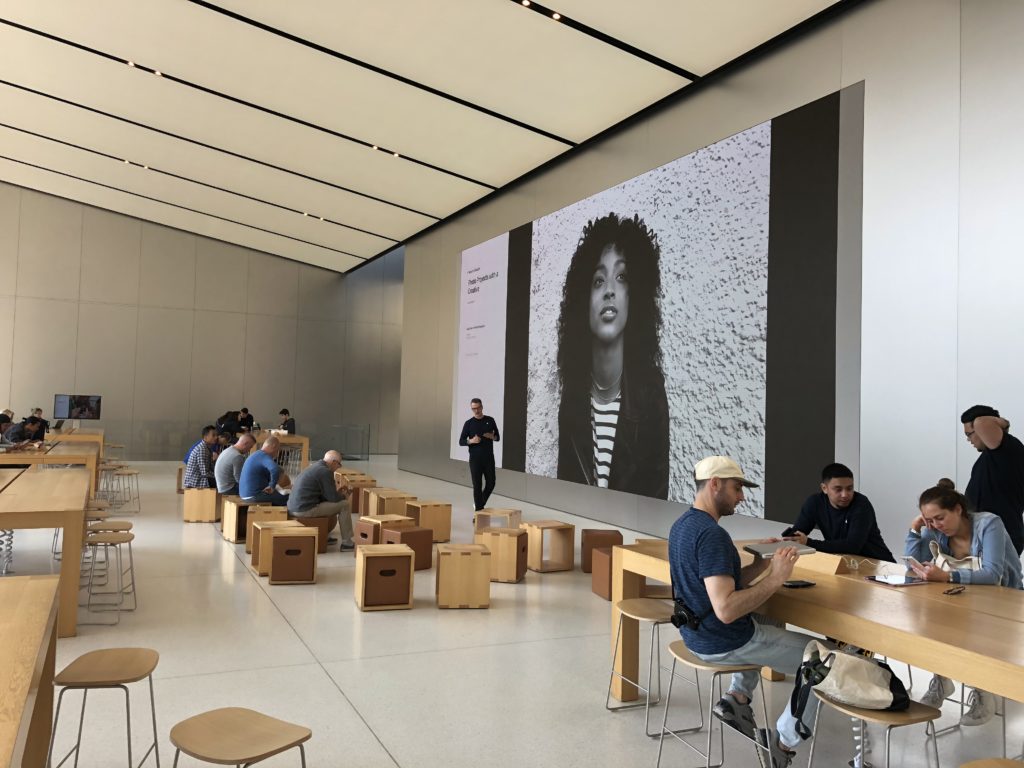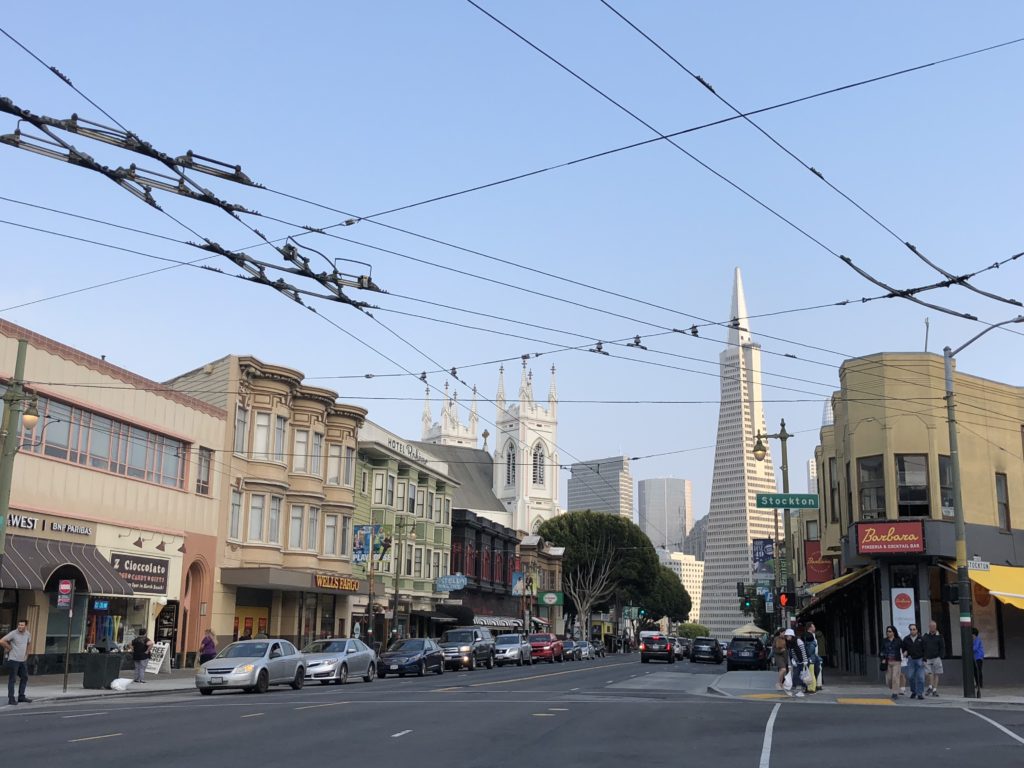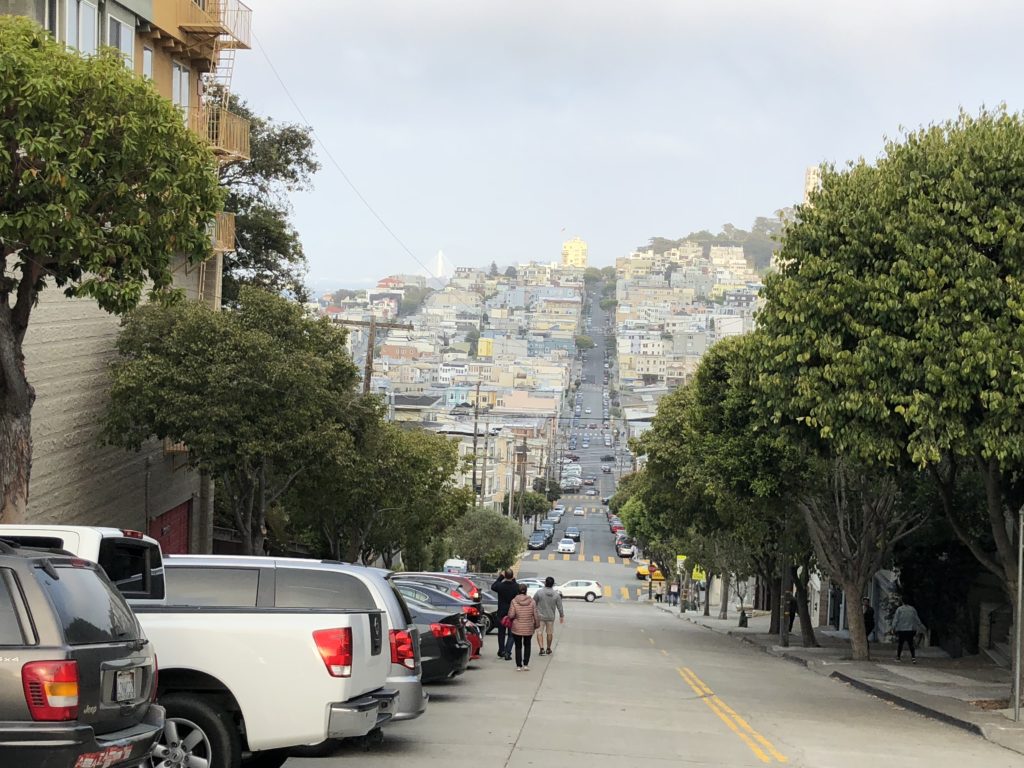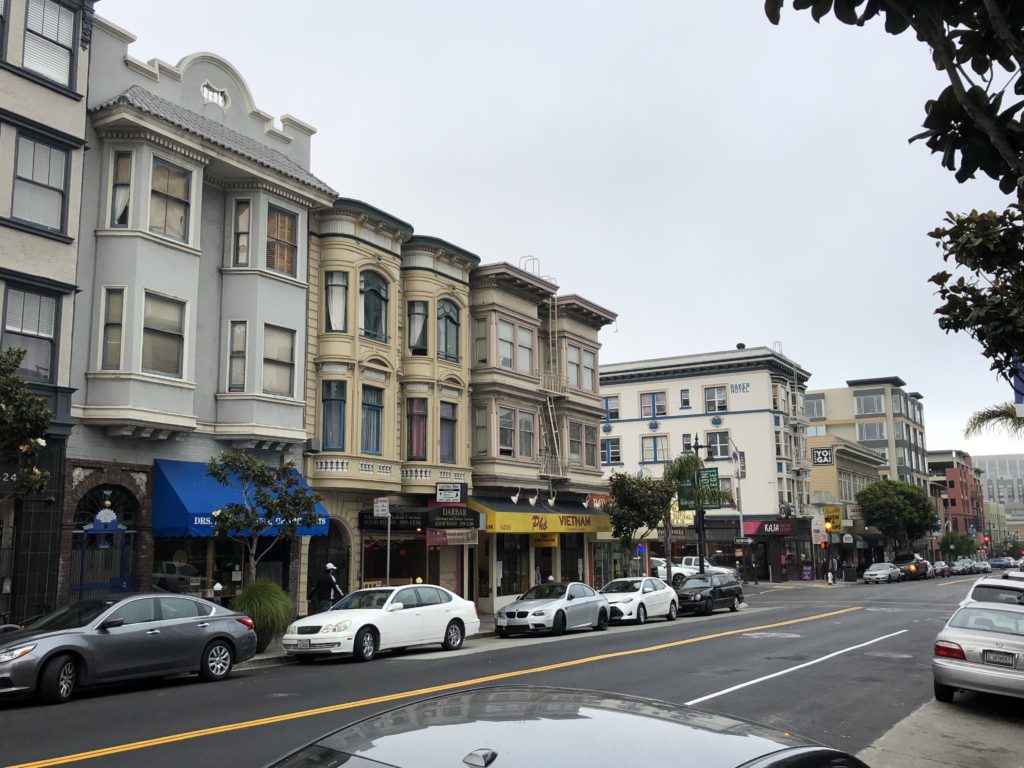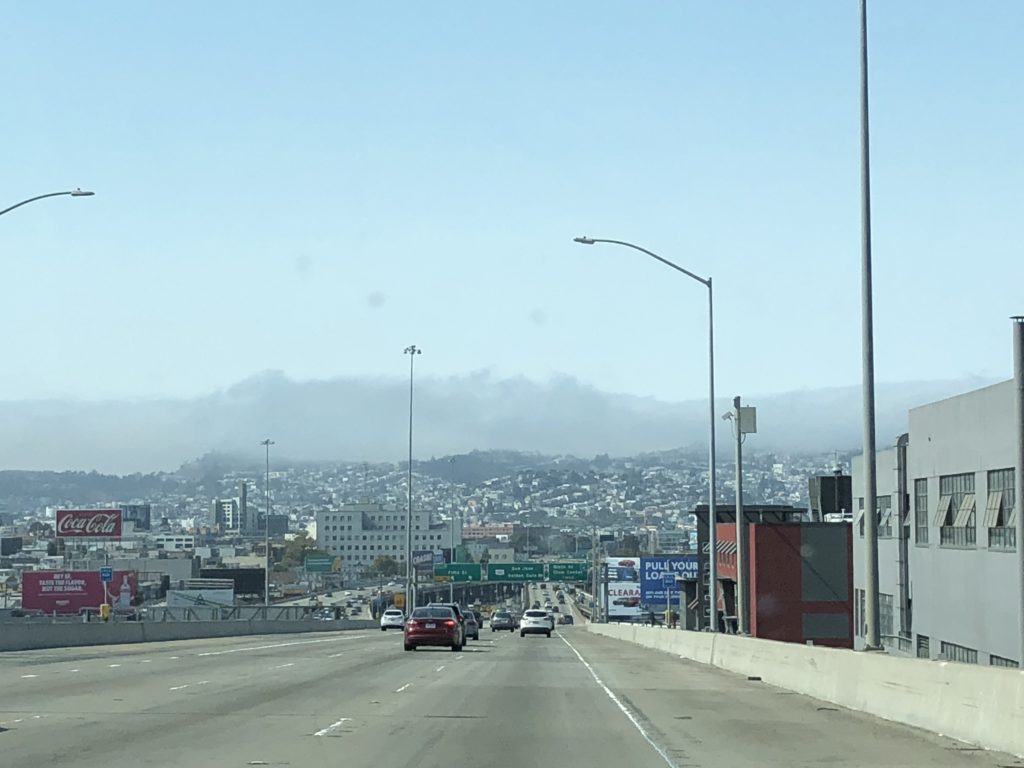One of the most scenic spots in San Francisco is Alamo Square Park. The tourist draw is the postcard-perfect row of Victorian houses facing the park called the ‘Painted Ladies’. Beautiful colours and beautiful architecture. But moving uphill towards the middle of the park, the view improves as the city’s impressive skyline comes into view. If you can remember the opening credits for Full House, you’ll recognise it. While tourists were out in force on the Sunday we visited, it also seemed well-visited by locals walking their dogs.
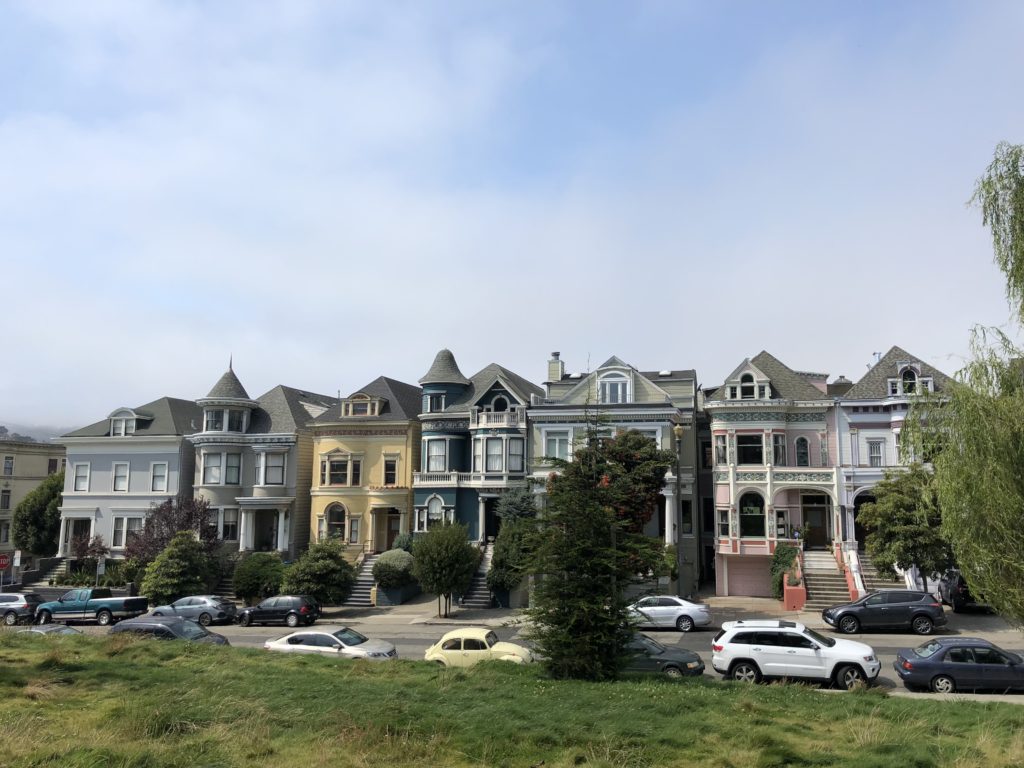
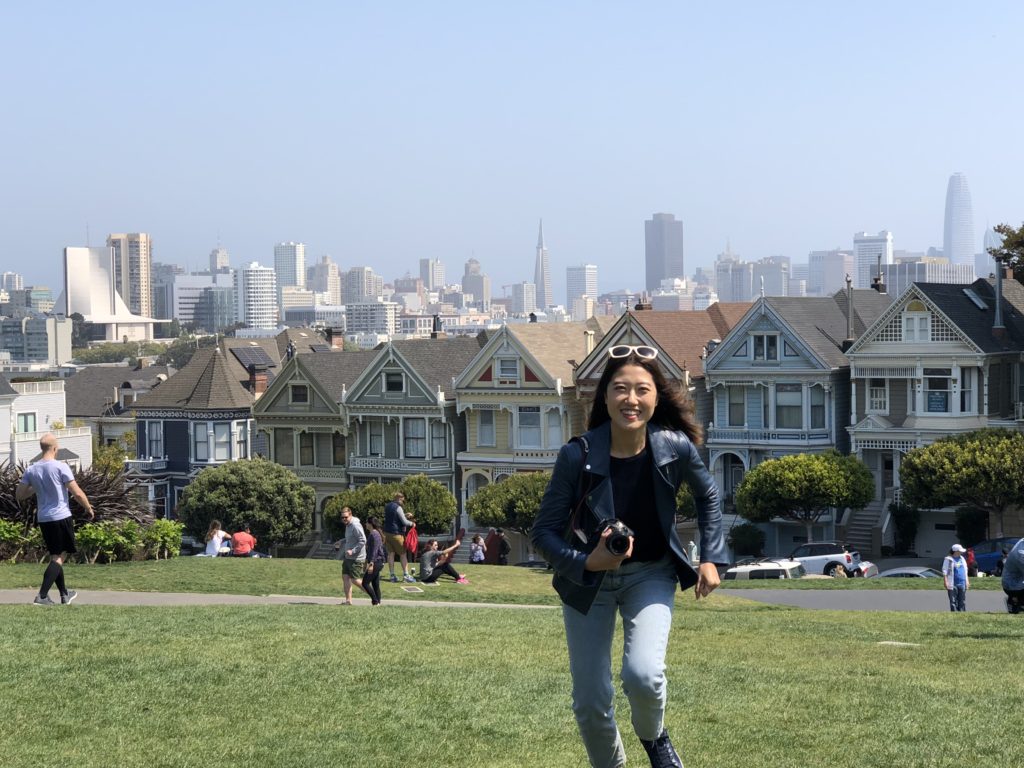
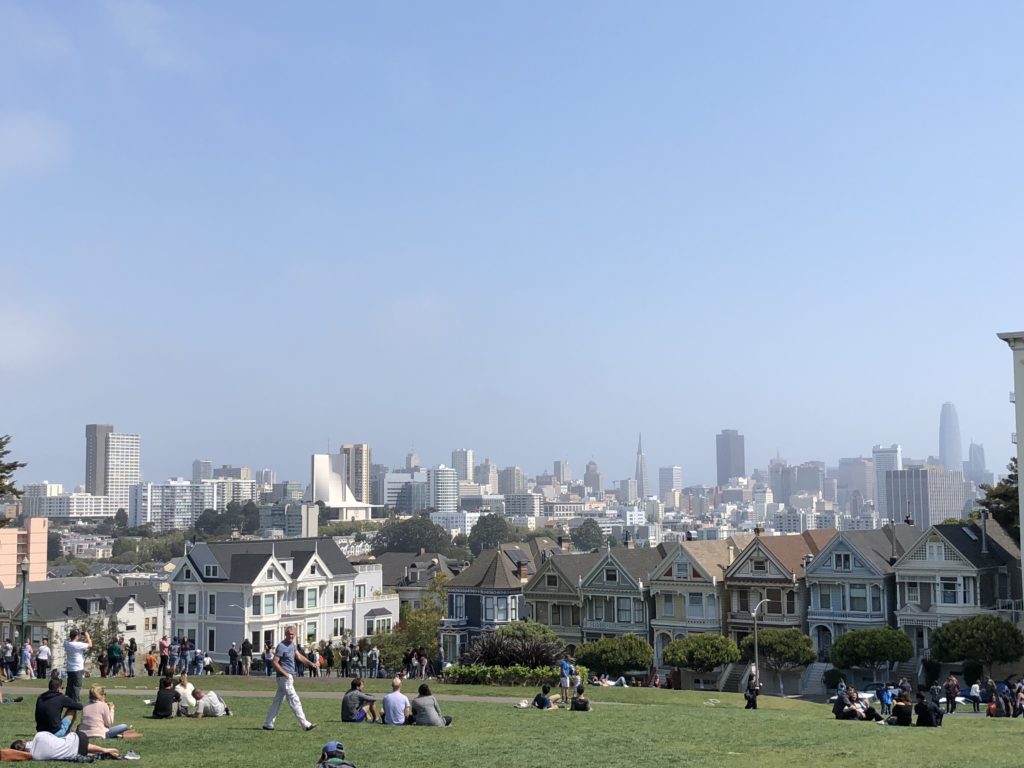
Traffic in and around the city is brutal. It’s was a densely packed city even before the tech explosion over the last decade, so driving in town is simply not fun. On most days, we found ourselves a good parking spot and explored San Francisco on foot.

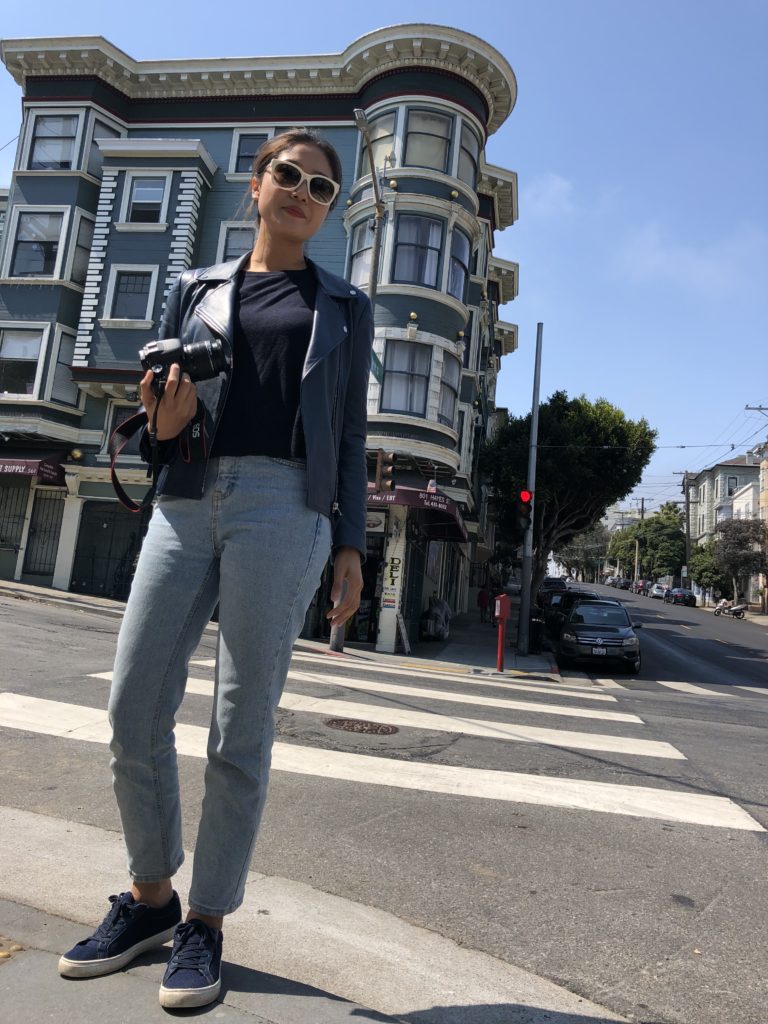
We came across city hall – the seat of government for San Francisco. It’s a big, tall, and grand structure that dates back to 1915. It replaced the original city hall that was destroyed in the massive 1906 earthquake. The quake itself and the subsequent fires destroyed over 80% of San Francisco!

Wandering through downtown, we spotted San Francisco’s iconic cable cars. I never really understood why these are called cable cars – they look like street cars or light rail transporters. But, looking a little closer, there are no overhead electricity cables, no engine rooms, and no exhaust fumes. How do these things move? What is actually happening is that, for each route, a long cable is being continuously pulled in a giant loop underneath the street. The longest of these cables is over six kilometres long. The cables move at about 15 kilometres per hour, driven by an electric motor in a central power house. The cable cars themselves then grip onto these cables when they need to move forward and release from them when they want to slow down. They are operated by an onboard driver or ‘gripman’. The cars also have separate braking systems. The whole thing sounds crazy – super long cables constantly running underneath the streets. Crazier still, this idea became a reality way back in 1873. San Francisco’s cable cars quickly became city icons. By 1892, however, they had become inferior to electric street cars, and began their decline. Today, three routes remain and the vast majority of the seven million annual passengers are tourists. They do look awesome:
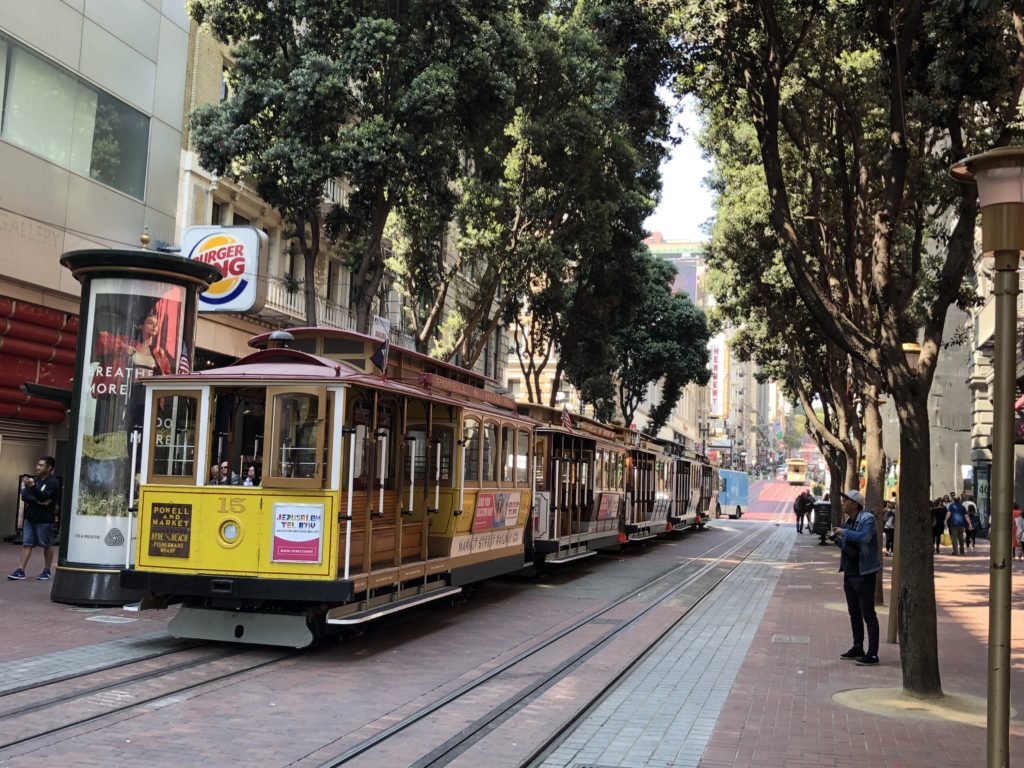
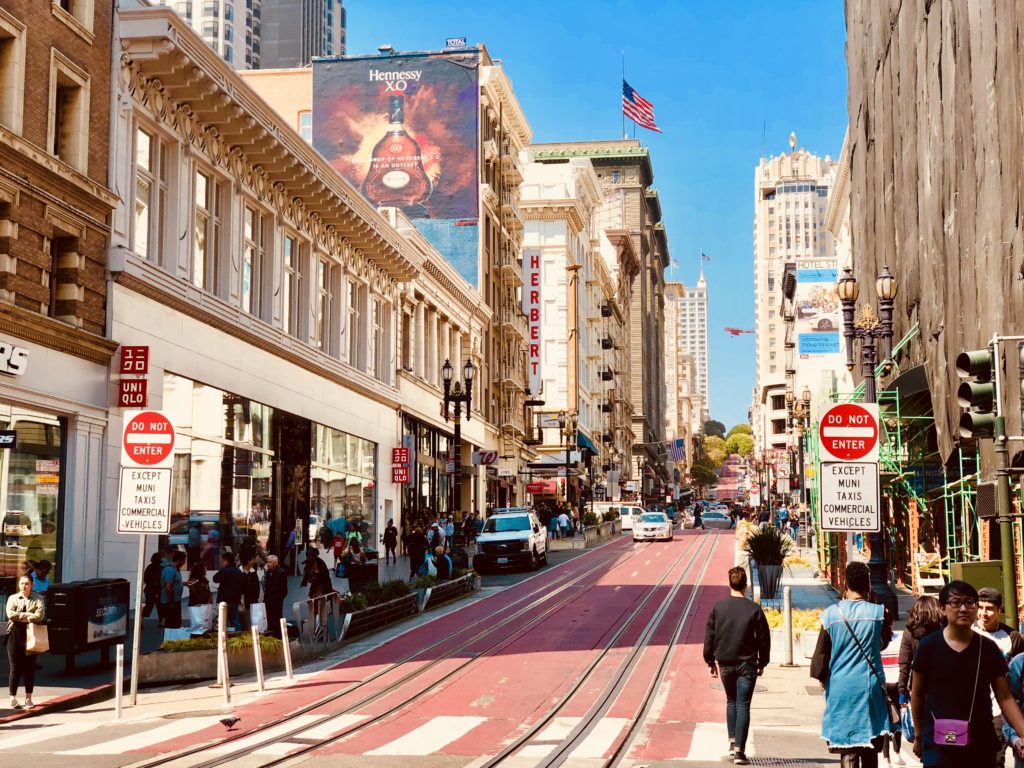
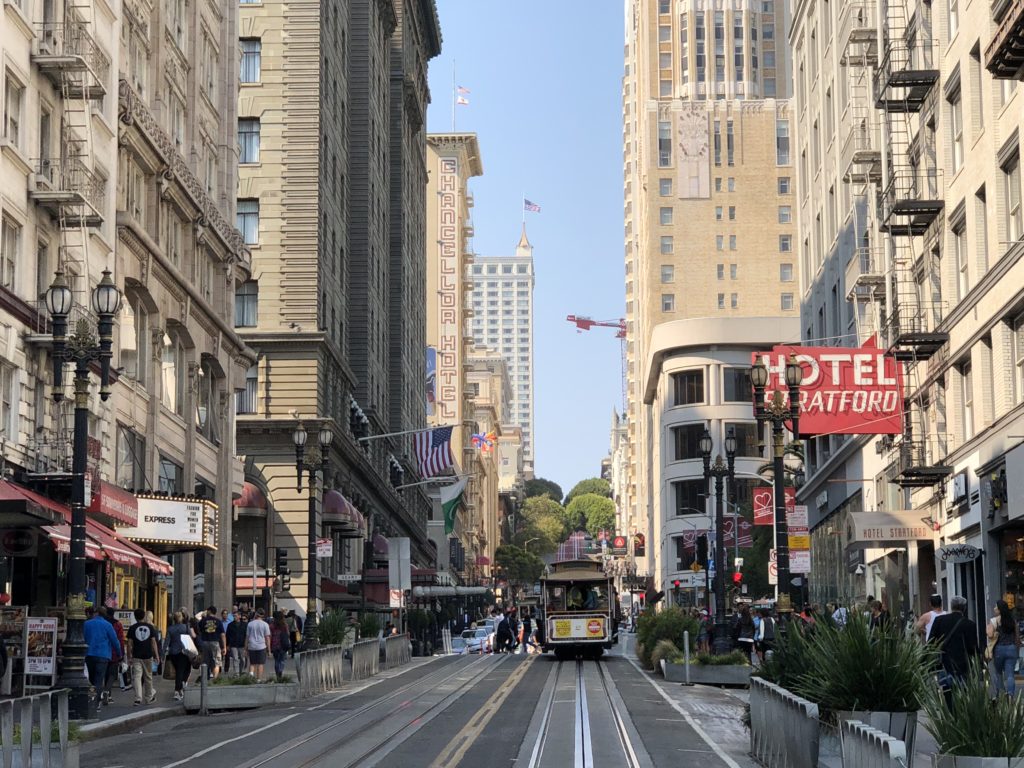

San Francisco is home to some major global tech firms, including a number of the ‘new-economy’ giants. Airbnb, Uber, Salesforce, Pinterest, Lyft, and Fitbit are just a few examples. Another giant, Twitter, is headquartered in an impressive building downtown with a great indoor food market at street level.
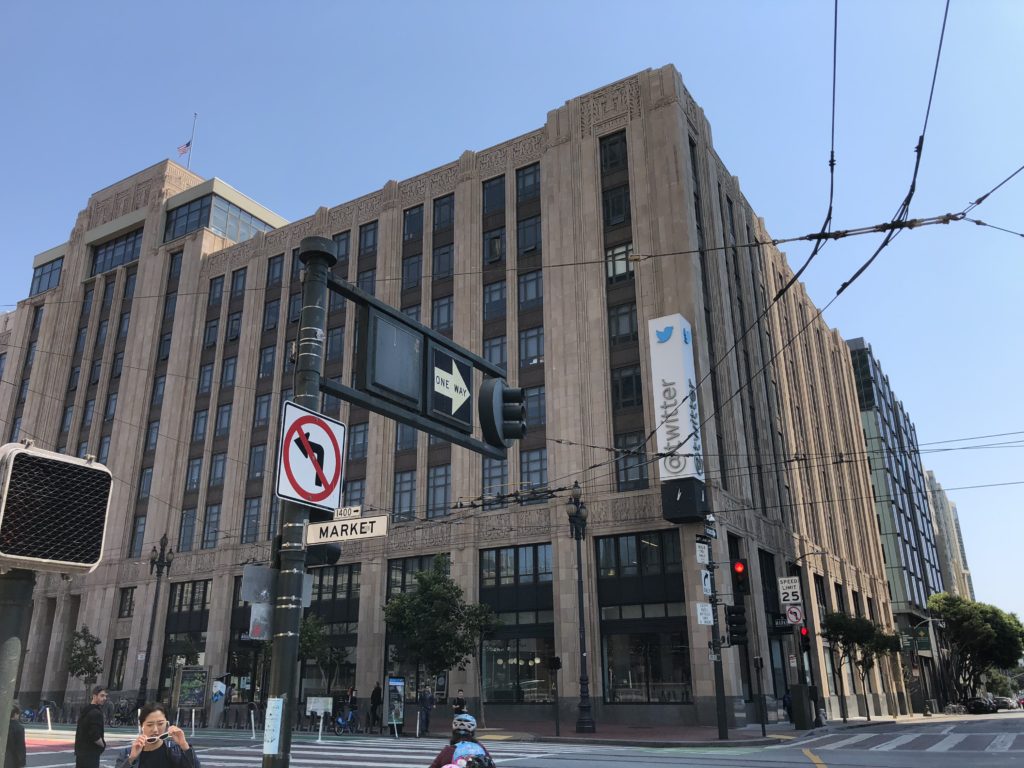
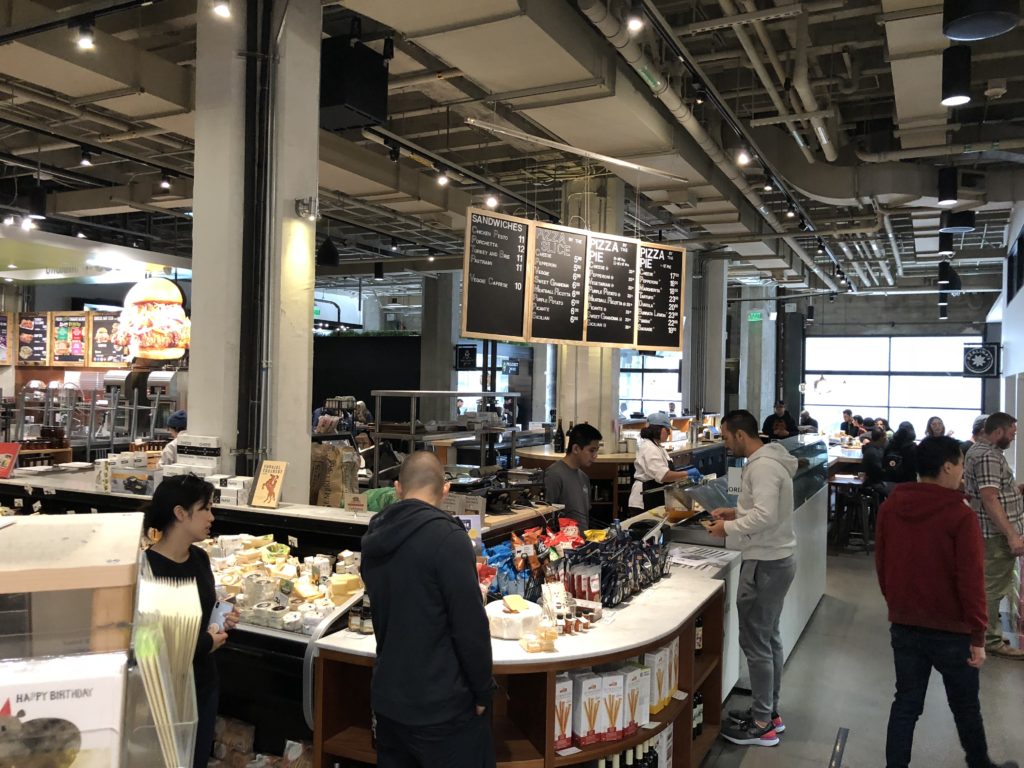
The city’s most interesting and photogenic neighborhood is surely Chinatown. I mean, take a look at this:
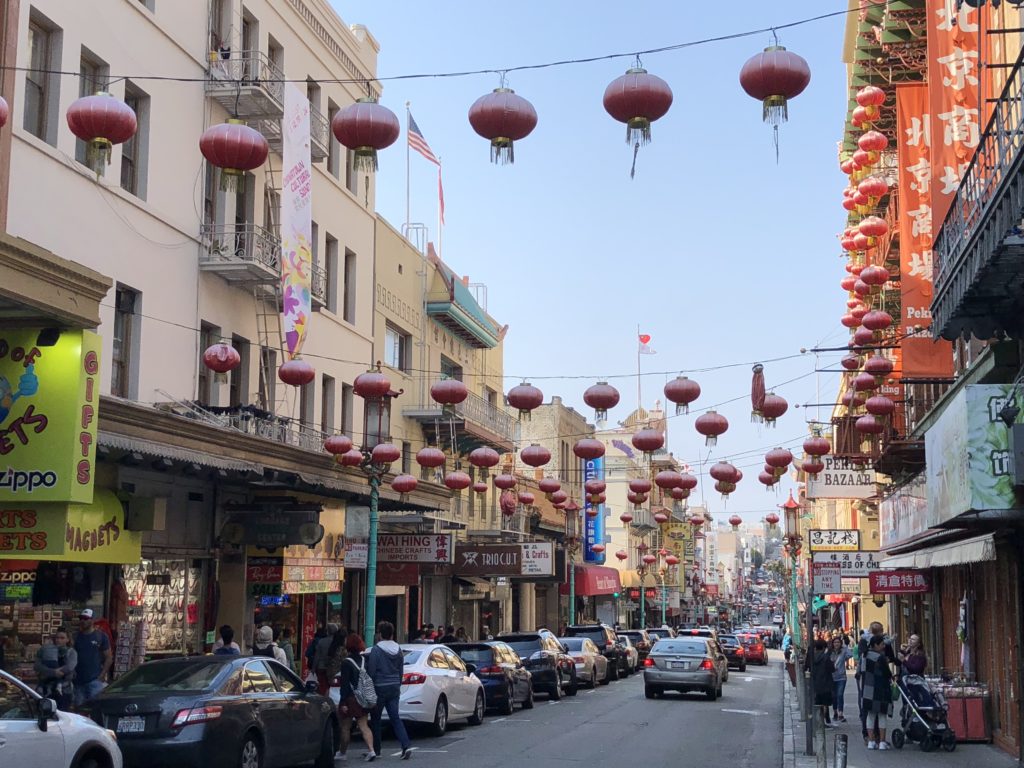
It’s supposedly the oldest and one of the largest Chinatowns in North America. It’s a really fun place to wander around – colourful, busy, and packed with shops selling a bit of everything.
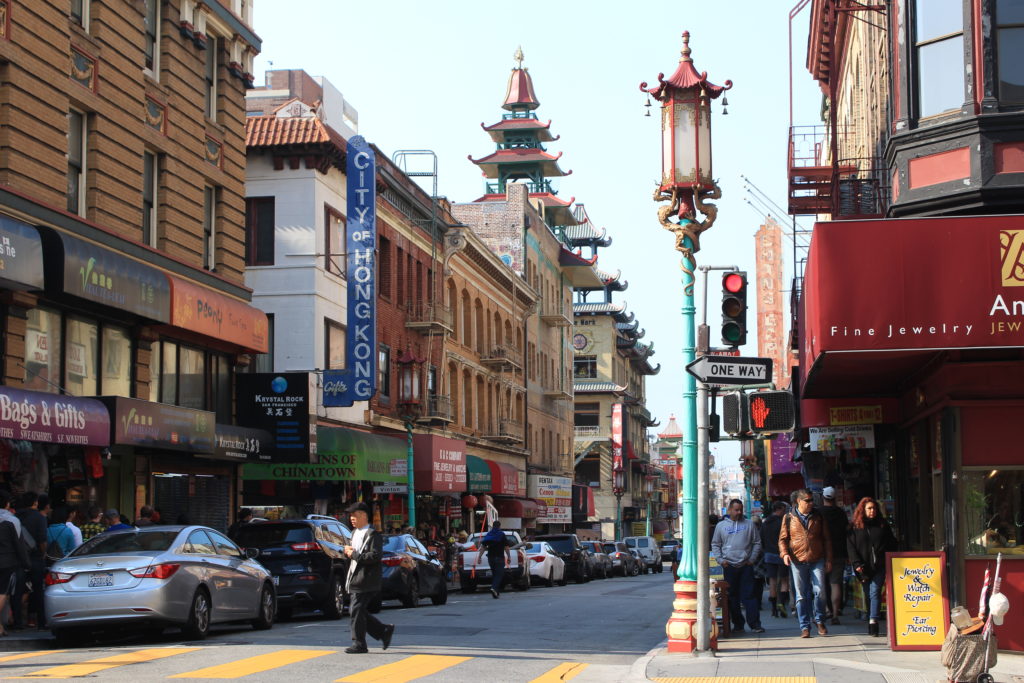
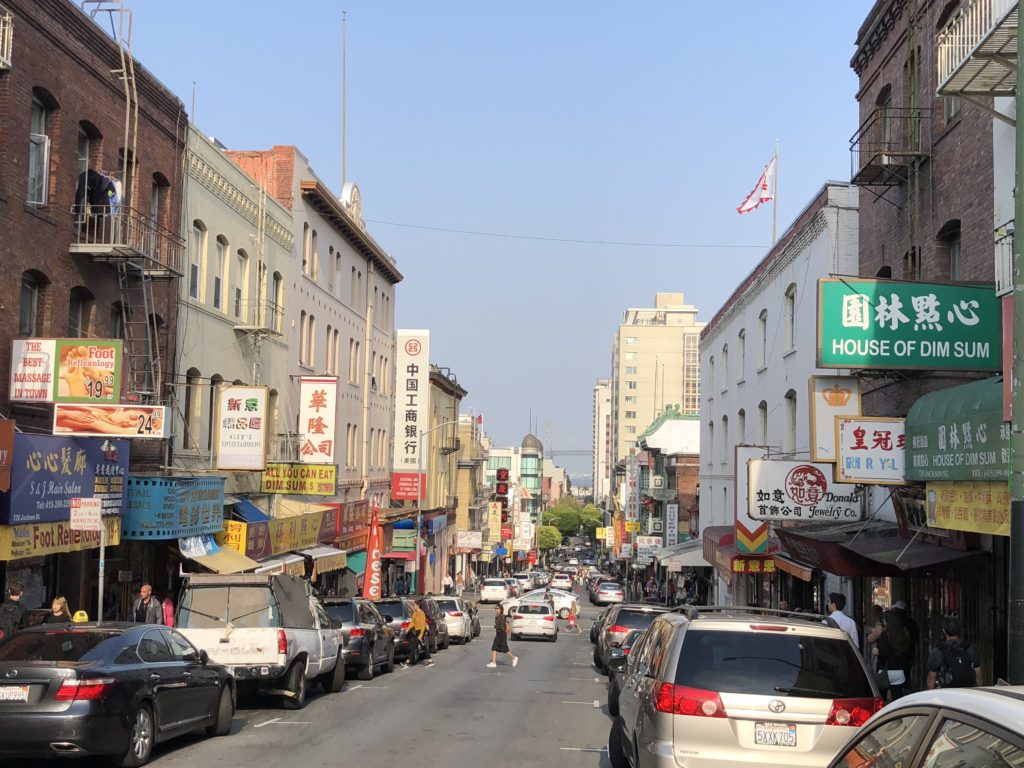
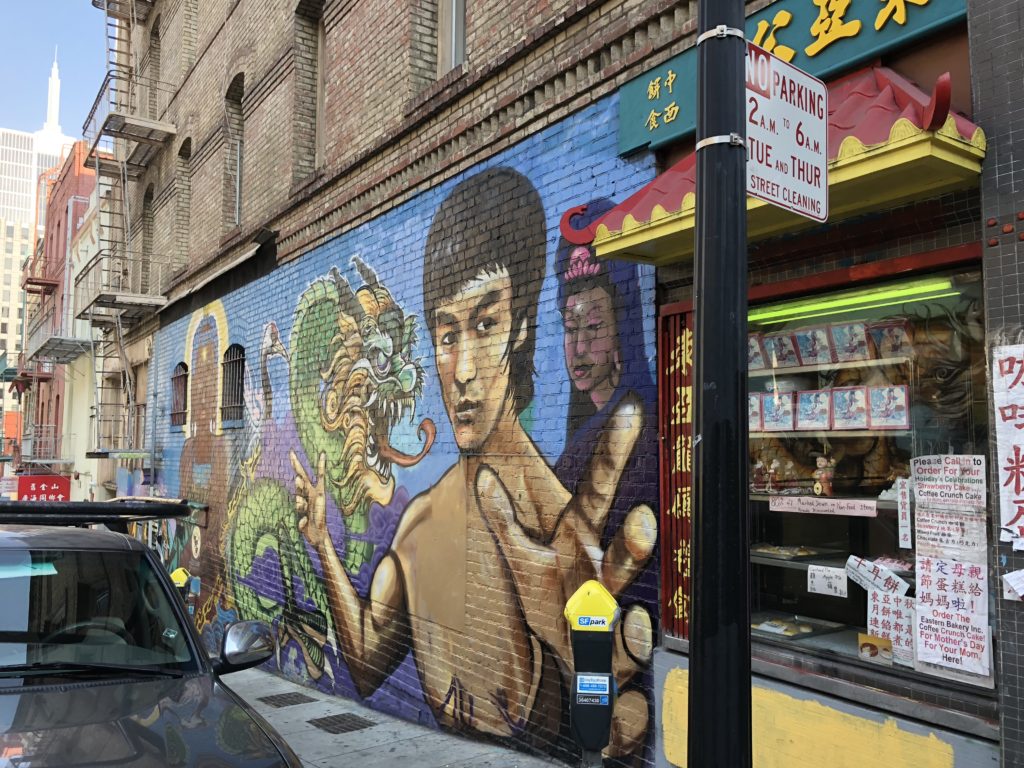
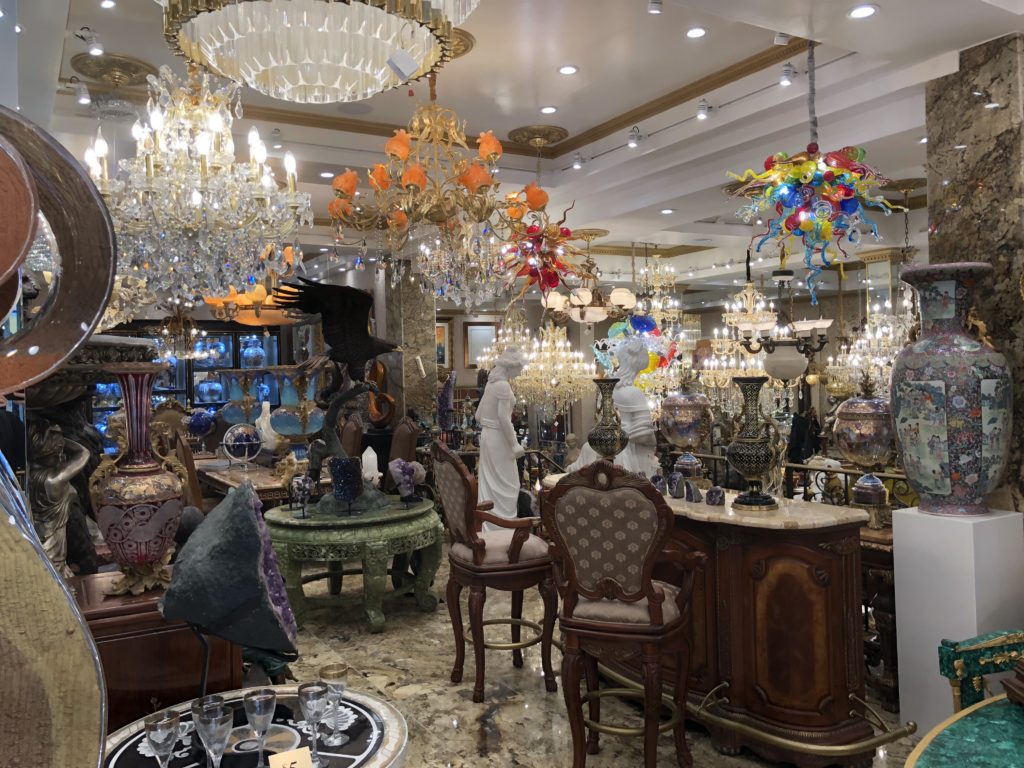
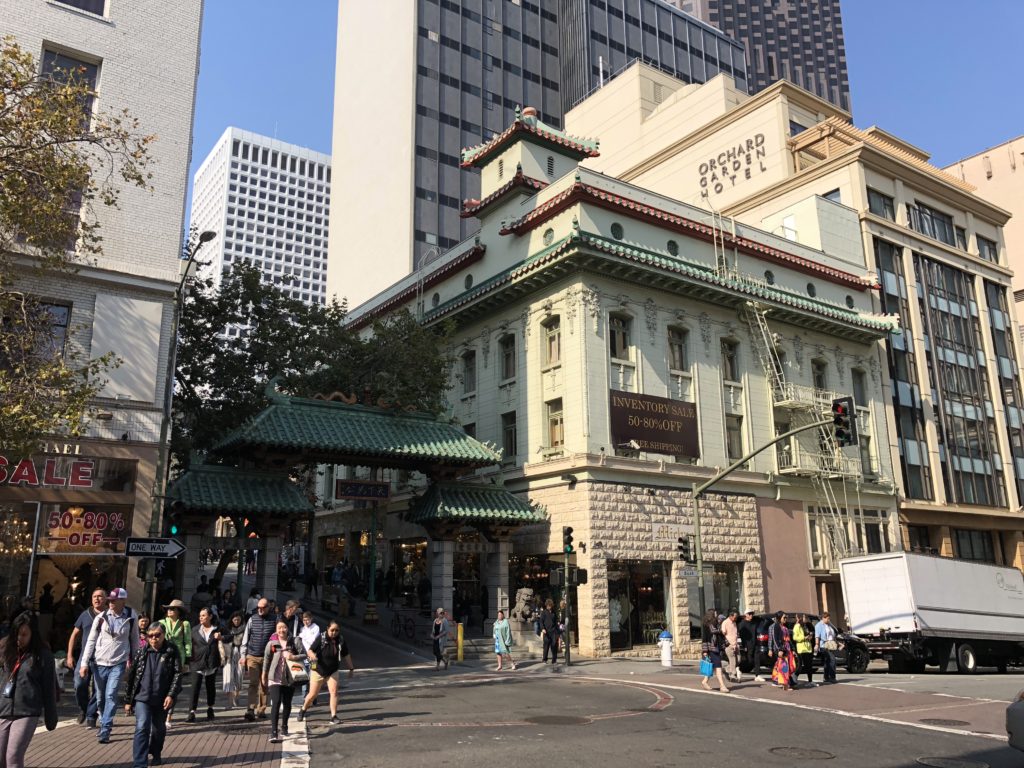

There are hundreds of restaurants and street stalls in Chinatown offering all sorts. We managed to find a favourite of ours from our Hong Kong trip a few years before – egg tarts.
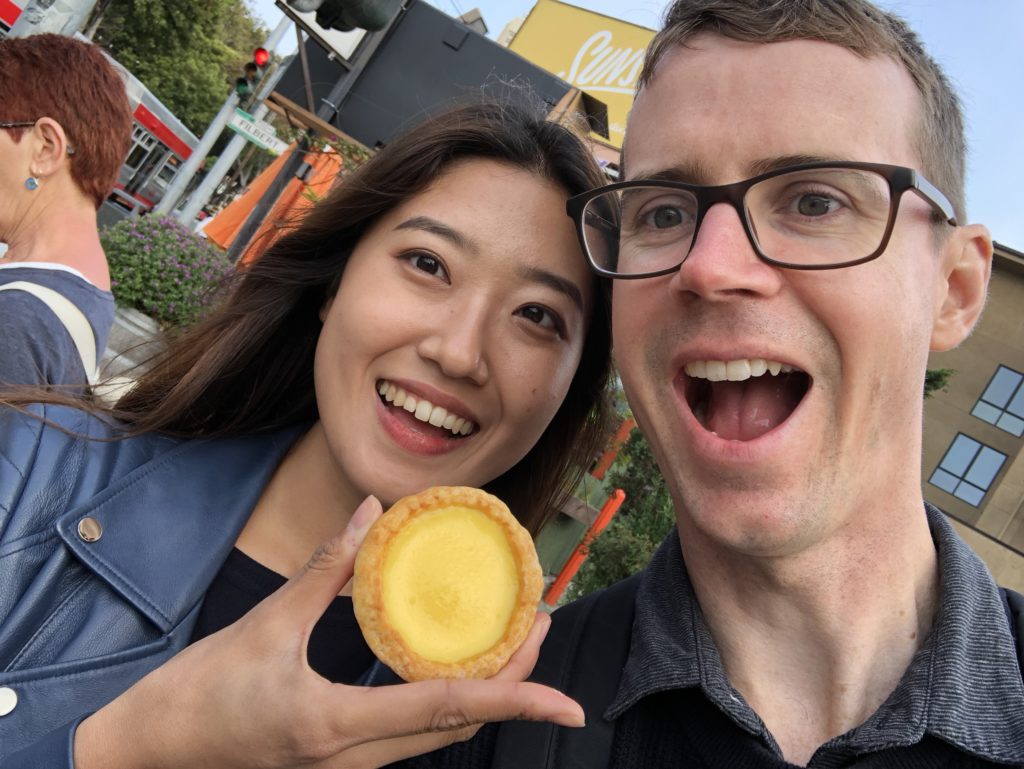
Lombard street, aka “the crookedest street in the world”, has eight sharp turns in a one-block stretch. It also has well-maintained flower gardens lining the road. The combination is quite something, and it makes the crookedest street one of the most visited. The innovation does not speed things up – traffic flows downhill, one-way, and at a snail’s pace. The intention was to make the gradient of the street flatter. Here’s what it looks like:
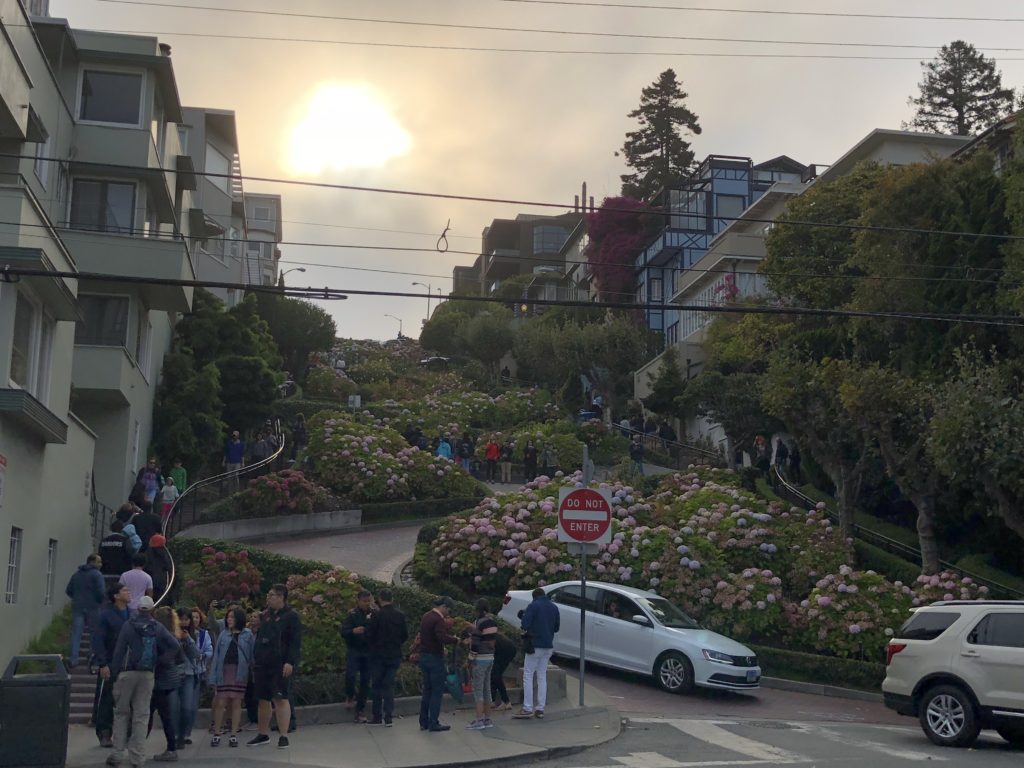
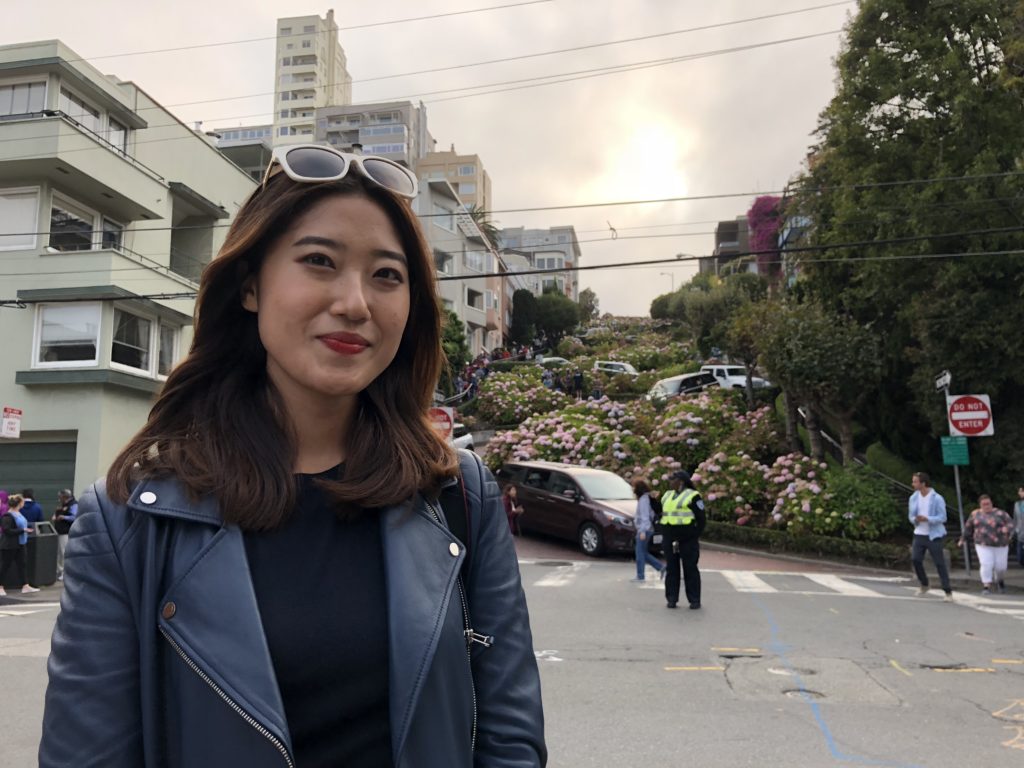
Just walking the streets of San Francisco is cool. After a great few days doing just that, we made our way south into Silicon Valley.
A few more San Francisco pictures:
